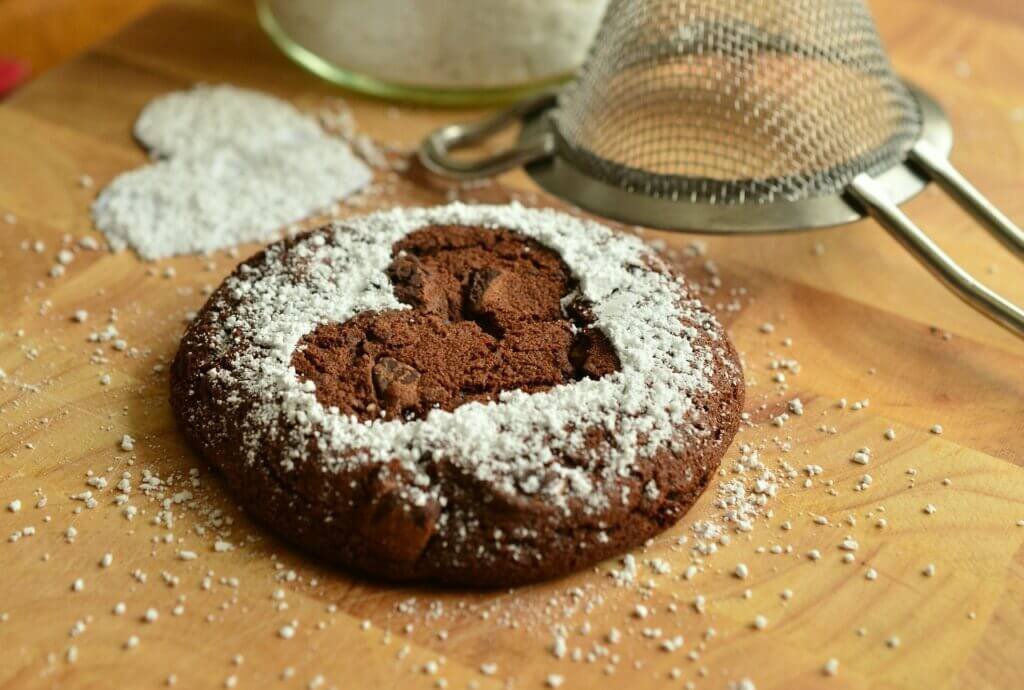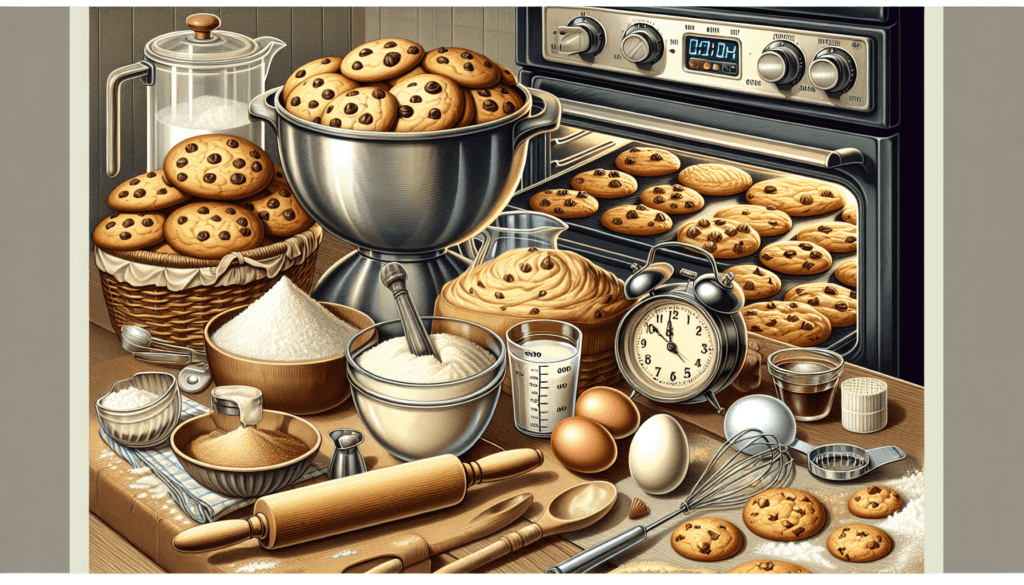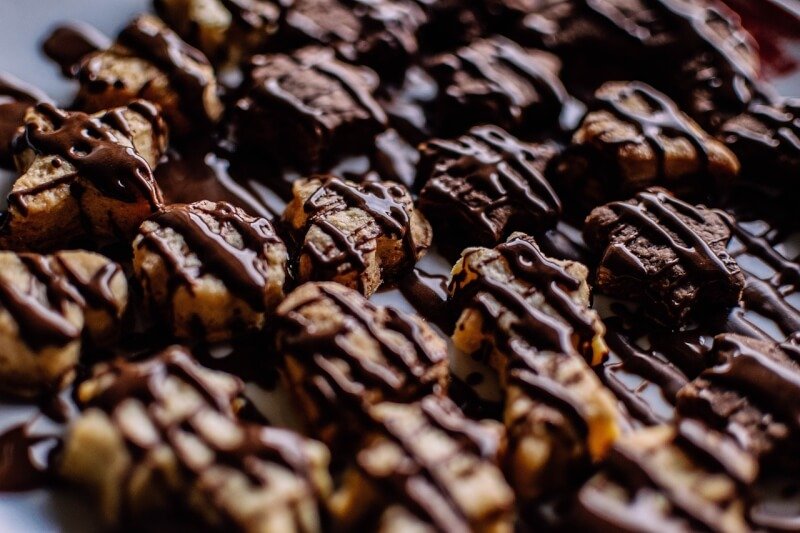Have you ever wondered how to achieve the perfect texture in your homemade cookies? Whether you’re a baking enthusiast or a novice in the kitchen, creating cookies with just the right balance of softness and crunch can be a challenge. But fear not! In this article, we’ll explore some tried-and-true tips and techniques that will help you master the art of making homemade cookies with a texture that will leave your taste buds dancing. So grab your apron, preheat the oven, and get ready to elevate your cookie game to new heights!

Choosing the Right Ingredients
Selecting the Best Flour
When it comes to baking cookies, choosing the right flour is crucial in achieving the perfect texture. All-purpose flour is a popular choice as it strikes a balance between a higher protein content for structure and a lower protein content for tenderness. However, you can experiment with different types of flour, such as bread flour or cake flour, to achieve varying results. Keep in mind that using whole wheat flour may lead to a denser and drier texture.
Choosing the Right Sugar
The type of sugar you use in your cookie dough greatly impacts its texture and flavor. Granulated sugar is a common choice as it provides structure and a crisp exterior. Brown sugar, with its molasses content, adds moisture and a chewy texture. For a touch of richness and tenderness, you can incorporate some confectioners’ sugar. Play around with the ratios of these sugars to find the perfect balance for your desired texture.
Optimal Butter Selection
Butter contributes to the flavor, texture, and spread of your cookies. When choosing butter, opt for unsalted butter as it allows you to control the amount of salt in the recipe. Additionally, using room temperature butter is crucial for proper creaming with sugar. Softened butter ensures aeration and creates a light and tender texture in your cookies. Remember to always use fresh butter to achieve the best flavor in your homemade cookies.
Understanding the Importance of Temperature
The Role of Room Temperature Ingredients
Many cookie recipes call for room temperature ingredients, and this is not without reason. Room temperature eggs, butter, and other ingredients blend more easily, resulting in a smoother and more evenly textured dough. When eggs and butter are at room temperature, they emulsify better, creating a more cohesive cookie. So, be sure to take the time to bring your ingredients to room temperature before embarking on your cookie-making adventure.
Chilling the Dough
Chilling your cookie dough serves several purposes, all of which contribute to the perfect texture. Firstly, it allows the flavors to meld together, intensifying the taste of your cookies. Secondly, it solidifies the fats and reduces the spread of the cookies during baking, resulting in a thicker and chewier texture. Lastly, chilling the dough relaxes the gluten, giving your cookies a more tender crumb. So, resist the temptation to skip this step, and give your dough some well-deserved chilling time.
Baking at the Correct Temperature
Maintaining the proper oven temperature is essential for achieving the perfect texture in your homemade cookies. If your oven temperature is too low, the cookies may spread excessively and become thin and crisp. On the other hand, if the oven temperature is too high, your cookies may burn on the edges while remaining undercooked in the center. Invest in an oven thermometer to ensure your oven is calibrated correctly and follow the recipe’s baking temperature for optimal results.

Balancing the Wet and Dry Ingredients
Measuring Ingredients Correctly
Accurate measurements are vital in achieving consistent results with your cookie recipes. When measuring flour, avoid scooping it directly from the container as it can lead to compacted flour and result in dry and dense cookies. Instead, spoon the flour into the measuring cup and level it off with a straight-edged utensil. Use measuring spoons specifically designed for dry and liquid ingredients to ensure precision in your measurements.
Using the Proper Ratios
The balance between wet and dry ingredients plays a significant role in the texture of your cookies. Too much flour can make your cookies dry and crumbly, while too much moisture will result in flat and spread-out cookies. Pay attention to the recipe’s ratios and follow them precisely for the best outcome. It’s also worth noting that high-altitude baking may require adjustments to the ratios to compensate for the lower air pressure.
Incorporating Dry Ingredients Gradually
When adding dry ingredients to your cookie dough, it’s crucial to do so gradually to ensure even distribution and a smooth texture. Sift or whisk your dry ingredients together before incorporating them into the dough. Add the dry mixture in batches, mixing on low speed or folding gently until just combined. Overmixing the dough at this stage can result in tough and dense cookies, so exercise restraint and stop mixing as soon as the dry ingredients are incorporated.
Exploring the Different Types of Leavening Agents
Baking Powder vs Baking Soda
Leavening agents such as baking powder and baking soda are essential for creating the right amount of lift and aeration in your cookies. Baking powder is a combination of baking soda, an acid, and a stabilizer. It provides a reliable rise and tender crumb in cookies. Baking soda, on the other hand, requires the presence of an acid (such as brown sugar or cream of tartar) to react and produce carbon dioxide, resulting in a softer and more spread-out cookie. Understanding the differences between these leavening agents allows you to choose the appropriate one for your recipe to achieve the desired texture.
Using the Right Amount of Leavening Agent
Accurate measurement of leavening agents is crucial for proper cookie texture. Too much baking powder or baking soda can cause your cookies to rise excessively, resulting in a cake-like texture. On the flip side, too little leavening agent can lead to dense and flat cookies. To ensure the right amount, use the measuring spoons designed specifically for these ingredients, and level off the excess with a straight-edged utensil.
Understanding the Role of Eggs
Eggs serve multiple functions in cookie recipes, including binding, providing moisture, and adding structure. The proteins present in eggs help create the desired texture, while the fats contribute to both flavor and tenderness. Some recipes may call for using only egg whites or egg yolks, altering the texture and richness of the cookies. Experimenting with different variations and ratios of eggs in your cookie recipes can lead to exciting and unique textures.

Mixing Techniques for Perfect Cookie Texture
Creaming Butter and Sugar
Creaming butter and sugar together is a classic technique used in many cookie recipes. It involves beating softened butter and sugar together until light and fluffy, creating air pockets that will expand during baking. This process incorporates air into the dough, resulting in a softer and more tender texture. Take your time and be patient when creaming the butter and sugar, and remember to scrape down the sides of the bowl to ensure everything is evenly mixed.
Beating Eggs Properly
When adding eggs to your cookie dough, it’s important to beat them properly to incorporate air and create structure. Beat the eggs until they are pale and slightly thickened before adding them to the dough. This step helps emulsify the fats and liquids, resulting in a smoother and more cohesive cookie texture. Beating the eggs also helps distribute the leavening agents more evenly, ensuring a consistent rise in your cookies.
Gently Folding in Dry Ingredients
When it’s time to add the dry ingredients to your cookie dough, it’s crucial to handle the dough gently to maintain a tender texture. Instead of vigorous mixing, use a spatula or wooden spoon to fold in the dry ingredients. Folding involves gently scooping the mixture from the bottom of the bowl and turning it over to incorporate the dry ingredients without deflating the air pockets created during creaming. This technique helps prevent overmixing and results in a light and delicate cookie texture.
The Magic of Resting Time
Refrigerating the Dough
Resting your cookie dough in the refrigerator before baking has numerous benefits. Firstly, it allows the flavors to develop, resulting in a more complex and well-rounded taste. Secondly, chilling the dough solidifies the fats, preventing excessive spread during baking and resulting in a thicker and chewier texture. Lastly, the resting time allows the gluten to relax, leading to a more tender and delicate crumb. So, remember to resist the temptation to skip this step and give your dough some quality time in the fridge.
Allowing the Dough to Rest
In addition to chilling the dough, allowing it to rest at room temperature for a short period before baking can further enhance the texture of your cookies. Resting the dough allows it to hydrate fully, ensuring even baking and a consistent texture throughout your cookies. This step also gives the flavors in the dough a chance to meld together, resulting in a more flavorful outcome. Letting your dough rest for about 10-15 minutes before portioning and baking will yield remarkable results.
The Benefits of Overnight Rest
For an unparalleled texture and flavor, consider letting your cookie dough rest in the refrigerator overnight. This extended resting time allows the flavors to deepen and intensify, resulting in richer and more complex cookies. The dough also has more time to chill, which leads to enhanced texture, including a chewier and more tender crumb. If you have the patience to wait, the reward of overnight resting will undoubtedly be worth it.

Choosing the Right Baking Pan
Using Insulated Cookie Sheets
When it comes to baking cookies, the choice of baking pan can significantly impact the texture of your treats. Insulated cookie sheets, also known as double-layered or air-cushioned sheets, are a popular option. Their insulated design helps distribute heat more evenly, preventing the bottoms of the cookies from over-browning. The result is an evenly baked cookie with a soft and tender texture. If you frequently bake cookies, investing in insulated cookie sheets can make a significant difference in achieving the perfect texture.
Opting for Dark or Light Pan
Another option to consider when selecting a baking pan is whether to use a dark or light-colored pan. Dark pans absorb more heat, which can cause cookies to brown and crisp up quicker on the bottom. Light-colored pans, on the other hand, reflect heat, resulting in a more gradual and even browning process. Pay attention to the recipe’s instructions or adjust your baking time accordingly based on the type of pan you choose to achieve the desired texture.
Understanding the Impact of Pan Size
The size of your baking pan can affect the texture and shape of your cookies. Using a larger pan can cause the dough to spread more, resulting in thinner and crisper cookies. Conversely, using a smaller pan can result in thicker and chewier cookies. Choose a pan size that aligns with the desired outcome for your cookies. If you’re looking for a specific texture, experimenting with different pan sizes can help you achieve your ideal results.
Understanding Oven Temperature and Timing
Preheating the Oven
Preheating your oven is a crucial step that ensures your cookies bake evenly and achieve the desired texture. When you place your cookies into a preheated oven, the immediate burst of heat helps set the edges, providing structure and preventing excessive spreading. Failing to preheat the oven can result in cookies that spread too thin, have uneven textures, or become overcooked. So, be patient and allow your oven to reach the proper temperature before indulging in your baking adventure.
Using an Oven Thermometer
Oven temperatures can be inconsistent, affecting the texture and appearance of your cookies. To ensure accuracy, it’s advisable to use an oven thermometer. Place the thermometer inside the oven to monitor the temperature throughout the baking process. This will allow you to make any necessary adjustments, such as increasing or decreasing the baking time, to achieve the perfect texture for your cookies.
The Importance of Proper Baking Time
Timing is everything when baking cookies, and achieving the perfect texture relies heavily on baking them for the correct amount of time. Underbaking can result in cookies that are too soft and fall apart easily, while overbaking can lead to dry and crunchy cookies. It’s essential to follow the recipe’s recommended baking time, while also keeping an eye on visual cues such as golden edges and slightly set centers. Practice and attentiveness will help you find the optimal baking time for your cookies and ensure the desired texture.
Avoiding Common Mistakes
Over-mixing the Dough
Over-mixing the cookie dough can lead to tough and dense cookies. When incorporating the dry ingredients, it’s important to mix only until just combined. Overmixing can develop gluten in the dough, resulting in a tighter and less tender texture. So, once the dry ingredients are no longer visible, stop mixing and resist the temptation to continue.
Over-baking the Cookies
Keep a close eye on your cookies while they’re in the oven to avoid over-baking them. The texture of your cookies can rapidly change from soft and chewy to dry and hard if left in the oven for too long. As soon as the edges turn a light golden brown and the centers are slightly set, it’s time to remove the cookies from the oven. Remember that the cookies will continue to cook slightly as they cool, so slightly underbaking them can help achieve the perfect texture.
Not Giving Enough Space for Spreading
During baking, cookies spread and expand as they release moisture and gases. It’s essential to leave enough space between the cookies on the baking sheet to prevent them from merging together or becoming misshapen. Generally, a spacing of about 2 inches between cookies is sufficient, but you can adjust it based on the recipe’s instructions. Providing enough space for spreading allows air to circulate evenly around each cookie, resulting in a consistent texture.
Ensuring Proper Cooling and Storage
Cooling the Cookies Correctly
Cooling your freshly baked cookies properly is key to achieving the desired texture. Allow the cookies to cool on the baking sheet for a few minutes before transferring them to a wire rack. This allows them to set and firm up slightly while still retaining a soft and chewy interior. Once the cookies have cooled completely, they are ready to be enjoyed or stored for later.
Storing Cookies for Optimal Freshness
To maintain the perfect texture and freshness of your cookies, proper storage is essential. Place your completely cooled cookies in an airtight container, such as a cookie jar or a sealable plastic bag. Adding a slice of bread to the container can help absorb excess moisture and prevent the cookies from becoming stale. Store the container in a cool, dry place away from direct sunlight and heat sources to preserve the cookies’ texture and taste.
Reviving Stale Cookies
If your cookies have lost their freshness and become stale, don’t fret! There are ways to revive them and bring them back to their original texture. One method is to place the cookies in a resealable plastic bag along with a slice of bread or an apple slice overnight. The moisture from the bread or apple slice will migrate to the cookies, rejuvenating their texture. You can also reheat the cookies in the oven at a low temperature for a few minutes to regain some of their initial softness. Reviving stale cookies is a great way to extend their life and enjoy them at their best.
In conclusion, achieving the perfect texture in homemade cookies is a delightful journey that involves selecting the right ingredients, understanding temperature’s importance, balancing wet and dry components, exploring leavening agents, mastering mixing techniques, allowing for resting time, choosing the appropriate baking pan, understanding oven temperature and timing, avoiding common mistakes, and ensuring proper cooling and storage. By following these comprehensive guidelines and infusing your baking process with love and passion, you can create homemade cookies with a texture that will have everyone coming back for more. So, gather your ingredients, preheat that oven, and embark on your homemade cookie adventure with the confidence of knowing that perfect texture awaits you!


